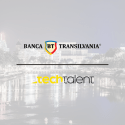The software industry is undergoing a historic transformation. Developers no longer rely solely on manual coding skills; they now have access to generative AI coding assistants that can draft complex modules, recommend functions, and even build frameworks in record time. This shift promises faster releases, lower development costs, and more accessible innovation.
Yet, the same qualities that make generative coding so attractive also introduce new categories of risk. Automatically generated code may lack proper security considerations, use insecure defaults, or introduce hidden dependencies. Attackers, aware of this rapid evolution, are adopting their own AI-driven strategies to exploit weaknesses at a pace that human security teams alone cannot match.
This is why the integration of DevSecOps with AI-augmented security is not just an option, it is becoming a necessity. By embedding security into every phase of the development lifecycle and enhancing it with machine intelligence, organizations can continue innovating while building trust and resilience into their digital products.
The Generative Coding Revolution and Its Security Implications
Generative coding accelerates software delivery, but it also changes the threat landscape. What was once a process carefully reviewed by teams of developers and security engineers can now happen automatically in seconds. While this speed increases productivity, it also shortens the time security teams have to respond.
Some of the most pressing challenges include:
- Copy-paste vulnerabilities: Generative AI often learns from vast amounts of publicly available code. If that code contains outdated functions or hidden flaws, those weaknesses can silently reappear in new projects.
- Lack of contextual security awareness: AI focuses on solving the problem presented in the prompt, not on securing it. The output might be technically correct but still expose sensitive data or fail to meet organizational security standards.
- Compliance blind spots: Industries like finance, healthcare, and government operate under strict rules and audits. Generative systems do not automatically ensure that new code aligns with these legal and regulatory frameworks.
- An ever-expanding attack surface: Faster development means more frequent releases. Without proper safeguards, vulnerabilities can slip into production, increasing opportunities for attackers.
For many organizations, this means that simply testing applications at the end of development is no longer sufficient. Instead, security must be continuous, automated, and intelligent.
What Exactly is DevSecOps in the AI Era?
DevSecOps was created to solve the problem of siloed teams. It recognizes that development, operations, and security are not separate concerns but interdependent responsibilities. In today’s environment of generative coding, this philosophy evolves further.
Modern DevSecOps now includes:
- Automated security testing integrated into the pipeline, ensuring that vulnerabilities are flagged before code reaches production.
- AI-enhanced analysis and prediction tools that can identify patterns of risk across large codebases far faster than human reviewers.
- Compliance-as-code, where regulations and organizational policies are written as executable rules and automatically enforced during builds.
- Real-time secure coding feedback so that developers are not only warned about risks but also guided toward safer implementations instantly.
This expanded model makes security a shared and visible responsibility. Every stakeholder, from engineers to managers, plays a role in ensuring that software is built securely from the start.
How AI is Transforming Security in DevSecOps
The role of AI is not just to keep pace with generative development, it is to outpace attackers. By automating processes that once required manual effort, AI allows teams to stay focused on strategy while maintaining a strong defensive posture.
1. AI-Powered Code Scanning
Traditional scanners generate many false positives, leading to alert fatigue. AI reduces this burden by understanding context and learning from historical outcomes, ensuring that only the most relevant and dangerous vulnerabilities are escalated.
2. Predictive Threat Modeling
Rather than waiting for an exploit to appear, AI uses historical data and simulations to map out possible attack paths. This allows teams to fortify defenses before real-world incidents occur.
3. Intelligent Risk Prioritization
Not all vulnerabilities are equal. AI systems can analyze thousands of issues and automatically rank them based on severity, exploitability, and business value of the affected system. This ensures that critical flaws are fixed first.
4. Real-Time Anomaly Detection
Applications are constantly producing logs, metrics, and telemetry data. AI can monitor this information continuously, recognizing unusual access attempts or patterns that deviate from normal behavior. This enables organizations to respond quickly to suspicious activity.
5. Adaptive Learning from Global Threats
As attackers evolve, so must defenses. AI systems can ingest global threat intelligence, learning from incidents across industries, and immediately apply these lessons to protect local environments.
DevSecOps + AI in Practice - A Secure Generative Pipeline
A modern pipeline powered by DevSecOps and AI might look like this:
- Code Generation
Developers use generative AI to create functions, services, or APIs. - Immediate AI Analysis
As the code is written, AI tools scan it for unsafe patterns, weak encryption, or insecure dependencies. - Pipeline Security Gates
Every commit triggers automated tests that verify compliance and security policies before merging. - Continuous Monitoring
Once deployed, AI-driven monitoring tools watch for unusual activity or performance deviations. - Self-Healing and Incident Response
If an issue is detected, AI can automatically roll back changes, isolate compromised components, or propose secure patches.
This loop ensures that speed does not compromise safety. Developers gain the benefits of generative AI, while security remains strong and adaptive.
Real-World Use Cases of AI-Augmented DevSecOps
Organizations across industries are beginning to see the benefits:
- Financial services protect sensitive transactions by scanning code for insecure handling of credentials before release.
- Healthcare systems monitor applications in real time to prevent breaches of private medical information.
- Retail and e-commerce deploy AI tools to detect fraud attempts hidden in customer behavior patterns.
- Public sector agencies apply predictive modeling to defend critical infrastructure against emerging cyber threats.
These examples illustrate that AI-augmented DevSecOps is not theoretical, it is being used today to secure systems that millions of people depend on.
Best Practices for Implementing AI-Augmented DevSecOps
To succeed, organizations must treat AI-augmented DevSecOps as both a technical upgrade and a cultural shift. Practical steps include:
- Shift security left by embedding checks at the design and coding stages, not just during deployment.
- Adopt explainable AI so developers understand why issues are flagged and how to fix them.
- Automate compliance policies to reduce the risk of human error and ensure consistency across environments.
- Foster a culture of shared responsibility where development, operations, and security collaborate openly.
- Regularly update AI systems with new data, as attackers continuously evolve their methods.
The combination of technology, process, and culture ensures that organizations can innovate quickly without leaving security behind.
The Future - Toward Autonomous, Self-Healing Security
Looking forward, the next stage of evolution is autonomous, self-healing systems. These will not only detect vulnerabilities but also:
- Generate secure patches in real time.
- Reconfigure themselves to block attacks before they escalate.
- Learn continuously from both local and global threats.
This future represents a shift from reactive defense to proactive resilience. Software won’t just be secure at release, it will actively protect itself throughout its lifecycle.
Conclusion
Generative coding is here to stay, and it is reshaping the way software is built. While it accelerates delivery, it also magnifies risks that can no longer be ignored.
By combining DevSecOps principles with AI-augmented security, organizations can transform their development pipelines into engines of both innovation and trust. Security becomes an enabler, not an obstacle, allowing businesses to release faster while maintaining resilience against evolving threats.
In the coming years, the companies that thrive will be those that embrace this model, building software that is secure by design, intelligent by default, and resilient by nature.
How TechTalent Can Support Your Secure Software Journey
Building software that is secure by design requires more than technology alone, it depends on skilled people, proven processes, and a mindset of continuous improvement. At TechTalent, we help organizations strengthen these foundations through IT Outsourcing, Staff Augmentation, and dedicated R&D Centers, enabling teams to innovate with confidence while maintaining resilience. You can learn more about our approach, explore our services, or get in touch with our team to start the conversation.



